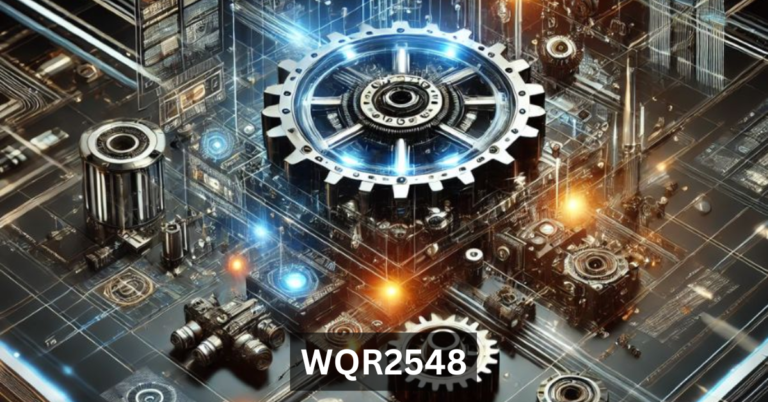Shimano Motor Downgrade: Troubleshooting and Tips
A Shimano Motor Downgrade refers to the process of reverting your Shimano Motor Downgrade’s firmware to an earlier version to restore features, resolve compatibility issues, or customize settings to suit your preferences.
Shimano, a leader in cycling technology, is at the forefront of this revolution with its Shimano E8000 motor system. This system, known for its seamless integration with e-bikes, provides smooth pedal assistance and reliable battery management. However, just like any other technology, Shimano Motor Downgrade systems, including the E8000, require updates to maintain their peak performance. These updates, though often beneficial, may sometimes bring about changes that cyclists don’t always prefer. This is where the concept of a Shimano Motor Downgrade comes into play. Downgrading refers to the process of reverting the firmware on your Shimano Motor Downgrade to an earlier version in order to regain certain functionalities, restore lost features, or resolve issues that may have surfaced after a firmware update. In this comprehensive guide, we’ll explore the reasons cyclists might consider downgrading their Shimano Motor Downgrade firmware, the benefits and risks involved, and how to execute the downgrade process with confidence.
As we delve into the specifics of Shimano E8000 firmware downgrades, it’s essential to highlight that this action is not something to be taken lightly. Firmware updates are designed to improve the performance and longevity of your motor system. However, in some cases, cyclists may find that newer firmware versions do not meet their needs, or they may encounter compatibility issues with existing accessories. In these situations, a firmware downgrade can provide a solution to restore the motor’s previous performance and settings. With a careful approach, understanding the tools involved, and the support of Shimano’s resources, downgrading your motor firmware can be an effective way to tailor your e-bike experience to your preferences.
Overview of Shimano Motor Downgrade Systems
Shimano’s motor systems, including the Shimano E8000, are designed to offer cyclists a high-performance, smooth, and efficient ride. Shimano has long been a trusted brand for all types of cycling components, from gears to pedals, and their entry into the e-bike market has been no different. The Shimano E8000 motor system is particularly favored by mountain bikers and off-road cyclists due to its reliable power delivery, smooth integration with Shimano’s gear systems, and its ability to handle the demanding conditions of rugged terrain. The motor is part of the Shimano STEPS system, a comprehensive electronics bike system that includes motor, battery, and control units, all working together to optimize performance.
One of the key features of the Shimano E8000 motor is its torque response and cadence sensor. These sensors ensure that the motor assists riders at the right level, whether they’re tackling steep inclines or cruising on flat terrain. The integration of the motor with the E-Tube Project software allows cyclists to customize various aspects of the motor’s performance, from assist levels to battery optimization. This customization is a huge advantage for riders who want to fine-tune their motor to suit their riding style. However, while Shimano’s motor systems are highly reliable, they are not immune to the occasional issue or bug that can arise after firmware updates. This is why some cyclists consider downgrading their Shimano Motor Downgrade firmware to revert to a version that worked better for their needs.
Why Do Cyclists Consider Downgrading Shimano Motor Downgrade Firmware?
The decision to downgrade Shimano Motor Downgrade firmware is often driven by the desire to regain control over certain features, restore lost functionalities, or address issues that arise with newer firmware versions. While firmware updates are designed to enhance the performance of your motor system, there are times when these updates don’t align with the rider’s preferences or needs. For example, some updates may introduce changes to the motor assist levels, altering the power delivery in a way that doesn’t suit the rider’s style. Alternatively, updates can sometimes cause unforeseen compatibility issues with existing accessories or components, such as the Shimano cadence sensor or Shimano torque sensor. These types of problems can significantly impact the overall riding experience, prompting cyclists to consider downgrading their firmware to restore the previous functionality.
In addition to resolving compatibility issues, some cyclists downgrade their firmware to recover certain features that were either altered or removed in a newer update. These features may have been particularly useful for the rider, and their loss can be a frustrating experience. For example, a firmware update might change the way battery management works, resulting in a reduction in battery efficiency or performance. In these cases, downgrading to an earlier firmware version can restore the previous battery management settings, improving overall efficiency and range. Ultimately, downgrading is a tool for cyclists who want to maintain the best possible performance of their Shimano Motor Downgrade while ensuring that the motor system operates in a way that suits their personal preferences and riding style.
What Is a Shimano Motor Downgrade?
A Shimano Motor Downgrade refers to the process of rolling back the firmware of your Shimano Motor Downgrade to an earlier version. This action is typically performed using the Shimano E-Tube Project software, which allows users to manage and customize various motor settings. While Shimano Motor Downgrade firmware updates are generally intended to improve the system’s performance, some riders may prefer the characteristics of an earlier firmware version. Downgrading the firmware to a version that worked better for the rider in the past can help restore lost features, fix performance issues, and resolve compatibility problems with accessories and sensors.
Definition and Purpose of Firmware Downgrades
The purpose of a firmware downgrade is to revert a system to an earlier state where it functioned better for the user’s specific needs. Firmware updates can introduce new features, bug fixes, and performance enhancements, but they can also change the behavior of the motor in ways that may not be favorable for all riders. For example, a new firmware version may introduce a higher level of motor assistance that some riders find too aggressive or difficult to control. In such cases, a Shimano Motor Downgrade can bring back the previous, more manageable motor response. Additionally, downgrading can address specific bugs or glitches that may have been introduced by newer firmware versions.
Common Reasons for Downgrading Shimano Motor Downgrades
The most common reasons for downgrading Shimano Motor Downgrade firmware are related to performance preferences and compatibility issues. Riders may downgrade if they experience a sudden drop in motor efficiency or if the new firmware introduces unwanted changes to assist levels or torque response. Another reason to downgrade could be compatibility issues with Shimano accessories, such as the cadence or torque sensors, that may not work as expected after an update. Finally, riders might simply prefer the motor’s behavior under an older firmware version and wish to restore that performance. Regardless of the reason, downgrading offers a way for users to regain control over their motor system.
Benefits of Downgrading Shimano Motor Downgrade Firmware
The benefits of downgrading Shimano Motor Downgrade firmware can be significant for those who need to restore certain functionalities, improve motor performance, or resolve compatibility issues. By reverting to an earlier firmware version, cyclists can regain control over various settings that may have been altered in a newer update. One of the primary benefits of downgrading is the ability to restore lost features. For example, some users may prefer a particular setting for motor assist levels, torque response, or battery management that was altered or removed in the latest firmware update. Downgrading can bring these settings back, allowing riders to enjoy the same performance they had before the update.
Another key benefit is the potential to resolve compatibility issues with other Shimano components or third-party accessories. Firmware updates can sometimes cause older components or sensors to malfunction or become incompatible with the motor system. Downgrading to a version that was compatible with these accessories can eliminate these issues and restore seamless integration. Additionally, Shimano Motor Downgrade customization options can be better fine-tuned with certain firmware versions, offering riders a more tailored and personalized experience. Ultimately, downgrading provides a way for cyclists to optimize their e-bike performance and enjoy a more stable, predictable ride.
Risks and Considerations Before Downgrading
While downgrading the Shimano Motor Downgrade firmware offers several benefits, it also comes with risks that riders should be aware of before proceeding. One of the primary concerns is the potential loss of new features and bug fixes. Firmware updates often include important bug fixes, performance improvements, and new features that enhance the functionality of the motor. By downgrading, you may lose access to these improvements, which could result in a less stable or less efficient system in the long run. It’s important to carefully evaluate the changes brought by the new firmware and consider whether the benefits of downgrading outweigh the potential loss of these updates.
Another risk of downgrading is the possibility of compatibility issues with other Shimano components or accessories. While downgrading may resolve some compatibility issues, it can also create new ones, particularly with components that are designed to work with the latest firmware versions. Additionally, downgrading may affect the Shimano warranty, as some manufacturers consider it a violation of the terms and conditions. Before proceeding with a firmware downgrade, it’s advisable to consult Shimano customer service or an authorized dealer to ensure that you understand the potential impact on your warranty and any legal or ethical considerations.
The Shimano E8000 Motor: A Quick Overview
The Shimano E8000 motor is a popular choice among e-bike enthusiasts, especially mountain bikers, due to its powerful performance and seamless integration with Shimano’s other cycling components. As part of the Shimano STEPS system, the E8000 is designed to offer smooth and efficient pedal assistance across a variety of terrains. The system includes a high-performance motor, a durable battery, and intuitive controls, all working together to ensure an optimal cycling experience. One of the standout features of the E8000 motor is its torque response. This allows the motor to adjust power output based on the rider’s pedal force, providing a natural and responsive ride. The motor’s cadence sensor further enhances this by detecting pedaling speed, making the assist more precise and responsive to changes in cycling conditions.
The motor is highly customizable through the Shimano E-Tube Project software, which allows users to adjust various motor settings, such as power assist levels, torque, and even battery management. This customization gives riders greater control over their motor, helping them tailor the system to their preferences, whether they’re tackling steep hills or cruising on flat terrain. However, as with any electronic system, firmware updates are regularly released to improve performance, fix bugs, and introduce new features. While these updates often enhance the motor’s functionality, they can also change certain settings or cause compatibility issues, leading some riders to consider a Shimano Motor Downgrade to restore the settings they prefer.
Firmware Updates and Version History (Focus on 4.10.1)
Firmware updates for Shimano Motor Downgrades, such as the E8000, are essential for keeping the system running smoothly and ensuring that the motor continues to perform at its best. However, not all updates are created equal, and some may introduce changes that users don’t find favorable. The Shimano firmware version history includes several updates, each designed to fix bugs, enhance performance, and sometimes introduce new features. A particularly notable version is 4.10.1, which brought several key improvements to the motor’s performance, including enhanced assist levels, better battery management, and improvements to the overall ride experience. While this version had a positive impact for many riders, others found that the changes to assist levels or torque response were too aggressive or not suited to their riding style, prompting them to consider downgrading to an earlier version of the firmware.
Firmware updates are released regularly, and it’s important for riders to stay informed about the changes they bring. Shimano Motor Downgrade firmware updates often come with release notes that detail the changes made in each version. However, as with any software, updates can occasionally introduce issues that weren’t present before. For example, some users experienced problems with the motor’s torque response or noticed that their Shimano E-Tube Project for Windows software was unable to properly communicate with the motor after the update. In such cases, downgrading to a previous firmware version, such as 4.10.1, can help restore functionality and improve the overall experience.
Step-by-Step Guide to Downgrading Shimano E8000 Motor Firmware
If you’ve decided that downgrading your Shimano Motor Downgrade firmware is the best option for your needs, here’s a step-by-step guide to help you through the process.
Step 1: Backup Your Current Firmware
Before proceeding with any firmware changes, it’s essential to back up your current Shimano Motor Downgrade firmware. This will allow you to restore the system to its original state if something goes wrong during the downgrade process. Using Shimano E-Tube Project software, you can easily create a backup of your current firmware. Simply connect your motor to the software, navigate to the settings menu, and select the option to back up your firmware. This ensures that you have a safety net in case you need to revert to the current firmware version.
Step 2: Install E-Tube Project Software
To manage your Shimano Motor Downgrade’s firmware, you’ll need the E-Tube Project software. This software is compatible with both Windows and Mac operating systems and allows you to customize and manage your Shimano components. To begin, download and install the E-Tube Project software from the official Shimano website. Follow the on-screen instructions to install the program on your computer. Once installed, launch the software and connect your Shimano Motor Downgrade to the computer using the Shimano USB adapter or a compatible cable.
Step 3: Connect Shimano E8000 to Your Computer
Using the Shimano USB adapter or compatible cable, connect your Shimano E8000 motor to your computer. The E-Tube Project software will automatically recognize the motor, allowing you to access the firmware management tools. Ensure that your motor is powered on and that the connection is stable to avoid any interruptions during the downgrade process.
Step 4: Selecting the Firmware Version (e.g., 4.10.1)
Once your motor is connected to the E-Tube Project software, navigate to the firmware management section. Here, you will see a list of available firmware versions. Select the version you wish to downgrade to, such as 4.10.1. If you’ve backed up your current firmware in Step 1, you can also compare the differences between your current version and the selected firmware.
Step 5: Downgrade Process: Flashing the Older Firmware
Now that you’ve selected the firmware version, click the “Downgrade” button to initiate the flashing process. The E-Tube Project software will begin to install the older firmware version onto your Shimano E8000 motor. This process may take several minutes, depending on the size of the firmware update. It’s important not to disconnect the motor during this time to avoid corrupting the firmware.
Step 6: Verify Successful Downgrade
Once the flashing process is complete, the E-Tube Project software will confirm whether the downgrade was successful. Ensure that the process has been completed without any errors. If the downgrade was successful, the motor will be running the selected firmware version. If you encounter any issues during the downgrade process, refer to Shimano troubleshooting guides for assistance.
Step 7: Test Motor Performance After Downgrade
After the downgrade, it’s important to test your Shimano E8000 motor to ensure that it’s functioning as expected. Test the motor’s power assist levels, torque response, and battery management to confirm that the settings align with your preferences. If you experience any issues, you can further fine-tune the motor’s settings using the E-Tube Project software.
Essential Tools and Requirements for Downgrading Shimano Motor Downgrades
To successfully downgrade your Shimano Motor Downgrade firmware, you’ll need the following tools and requirements:
- Shimano E-Tube Project software: This is the primary software used to manage your Shimano Motor Downgrade’s firmware.
- Shimano USB adapter or compatible cable: This allows you to connect your motor to your computer.
- A fully charged battery: Ensure that your motor’s battery is fully charged before beginning the downgrade process to prevent interruptions.
- A computer with internet access: This is needed to download the necessary software and firmware updates.
Shimano Motor Downgrade Alternatives
If you’re hesitant about performing a Shimano Motor Downgrade or if you’re facing issues with the process, there are alternative solutions available. You can contact Shimano support for assistance. The Shimano customer service team is available to help troubleshoot any issues you might encounter during the downgrade process, and they can offer guidance on the best firmware version for your needs. Alternatively, you can consider using custom firmware settings without the need to downgrade by adjusting motor settings through the E-Tube Project software.
Another option is to use third-party software for motor customization. Some riders prefer third-party solutions to further adjust their motor settings without performing a full downgrade. However, it’s important to note that using third-party software may void your warranty and could cause unforeseen issues with motor performance.
Troubleshooting: Common Issues After Downgrading Shimano Motor Downgrade Firmware
After performing a Shimano Motor Downgrade firmware downgrade, you may encounter certain issues that need troubleshooting. Some common problems include:
- Firmware Downgrade Errors: If you encounter an error during the downgrade process, check the connection between the motor and your computer. Ensure that you’re using the correct cable and that the motor is fully charged.
- Testing Power Assist Levels and Torque Response: After downgrading, test the motor’s response to ensure that the power assist levels and torque response meet your expectations. If not, further adjustments can be made in the E-Tube Project software.
Sensor and Display Compatibility: If you experience issues with the Shimano cadence sensor or Shimano torque sensor, verify that the sensors are properly connected and calibrated.
Legal and Ethical Considerations in Downgrading Shimano Motor Downgrade Firmware
When downgrading Shimano E8000 firmware, it’s essential to consider the legal and ethical implications. Some regions have regulations surrounding firmware modifications, especially when it comes to warranty concerns. It’s important to ensure that downgrading does not void your warranty or violate local laws. Additionally, while firmware downgrades are generally allowed for personal use, altering the motor’s settings in a way that violates Shimano’s terms of service may be problematic. Always consult Shimano’s authorized dealers and customer service to ensure that you are within the guidelines.
Conclusion
The decision to downgrade your Shimano Motor Downgrade firmware comes down to personal preference and the specific issues you’re facing with the motor. Downgrading offers several benefits, including restoring lost features, resolving compatibility issues, and fine-tuning motor settings to suit your riding style. However, it’s essential to weigh the risks, such as the potential loss of new features and bug fixes, as well as compatibility concerns with other Shimano components.
For Shimano E8000 owners, understanding the process and the tools involved is key to ensuring that the downgrade is successful and safe. If done correctly, downgrading can enhance the overall cycling experience by providing a more tailored motor performance. Ultimately, it’s about making the right decision for your unique needs, and with the support of Shimano’s customer service and the E-Tube Project software, you can confidently adjust your motor system to achieve the best possible results.
Frequently Asked Questions
How do I downgrade my Shimano E8000 firmware?
To downgrade your Shimano E8000 firmware, you need to use the Shimano E-Tube Project software to select and install an older firmware version. Ensure you back up your current firmware before proceeding.
Can downgrading Shimano Motor Downgrade firmware cause problems?
Yes, downgrading can lead to issues like loss of new features, compatibility problems with other Shimano components, or potential voiding of the warranty. It’s important to weigh the pros and cons before downgrading.
Is downgrading Shimano firmware legal?
In most cases, downgrading Shimano firmware is legal for personal use. However, it could void your warranty or violate local regulations. Always consult Shimano customer service for guidance.
How do I troubleshoot issues after downgrading Shimano Motor Downgrade firmware?
If you encounter issues after downgrading, check the motor’s power assist levels, ensure sensors like the torque and cadence sensors are working correctly, and verify firmware compatibility with other Shimano components. Use the E-Tube Project software for troubleshooting assistance.
Stay in touch to get more updates & alerts on EroMe! Thank you






